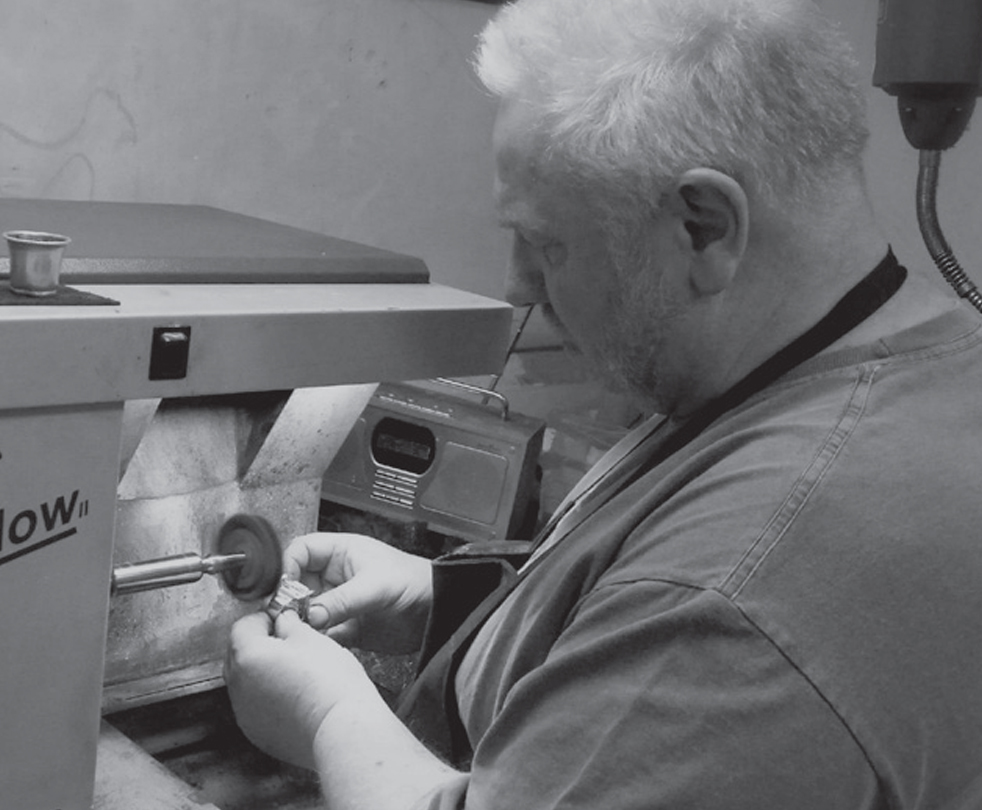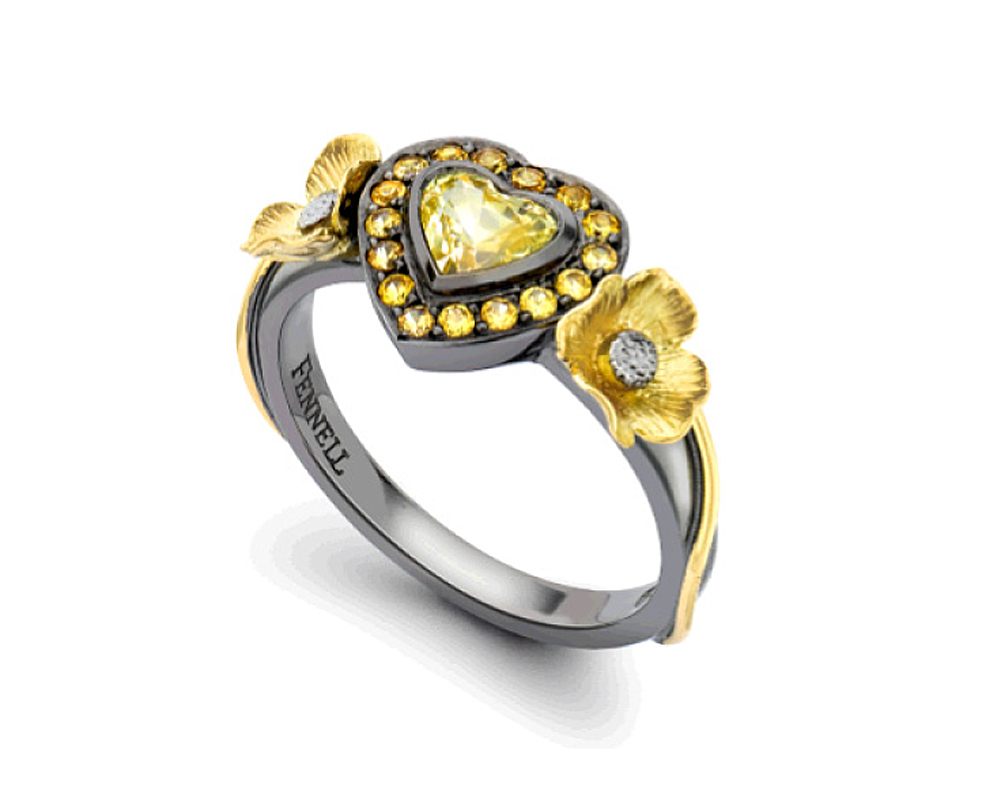Polishing
Most jewellery and silverware is pre-polished to give it an evenness on which the last few touches can be carried out, say setting for jewels and engraving for silver, and they are then polished, at the end of all the work having been carried out on them to burnish and finish the pieces.
Being the final job polishing can make or break a piece and is a real art form at its best. Polishing is done by mops made of different hardnesses of material and with different polishing substances on them used one after the other to gradually build up the polish to the brilliant finish we are all familiar with. It is a dirty and dangerous job but absolutely vital as bad polishing can ruin hours of great work and good polishing enhance it.
As well as polishing, the polisher will also use other finishes on a piece.
Gilding and Gold Plating – The covering of various areas of, or the whole piece, in Gold plate. This can be done on most metals but, normally, Silver. There are various different colours and purities of gold used to do this.
Oxidising – Specifically on silver, oxidising is used to give an antique, blackened look and to give contrast to a piece.
Rhodium – A rare, hard, silvery white precious metal, a member of the platinum group, it is used in jewellery to plate white gold to improve appearance and to plate silver to prevent tarnishing.
Lustre – This refers to the amount of light reflected off the surface of a gem, and is influenced by both the hardness of the stone and how well it has been polished, essentially – how shiny is the surface of the stone.








